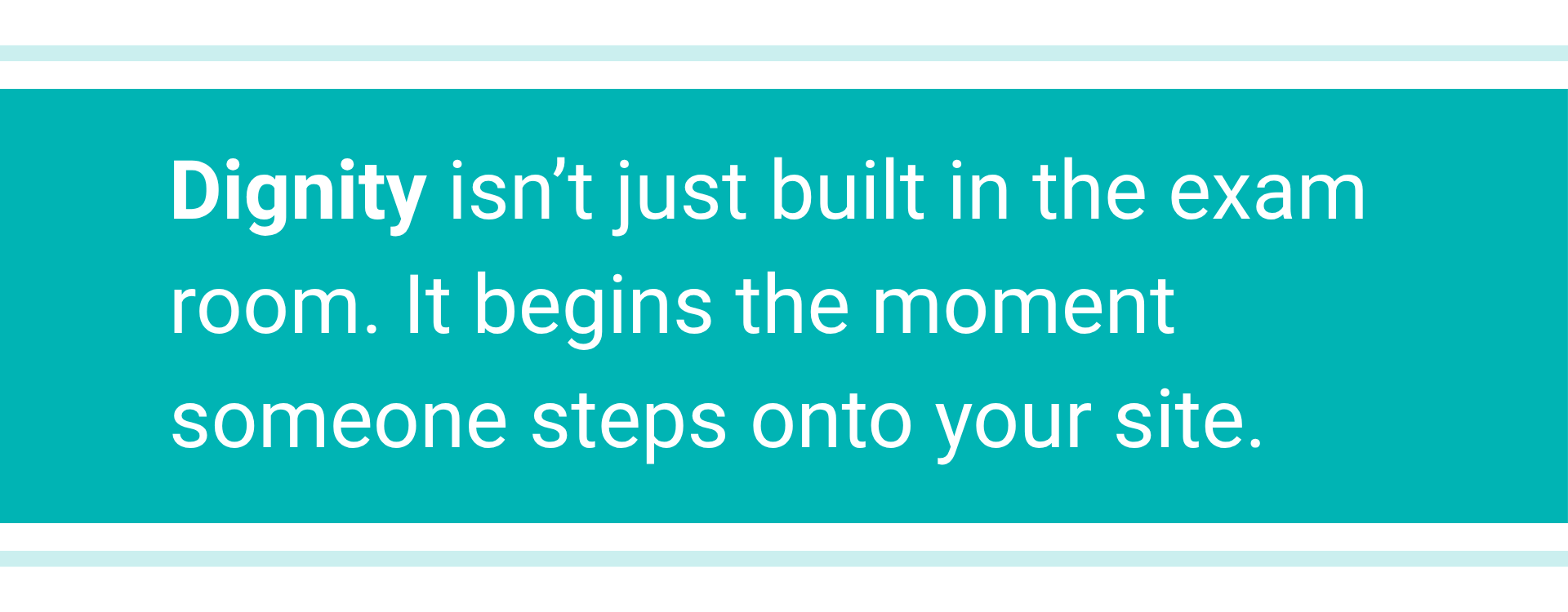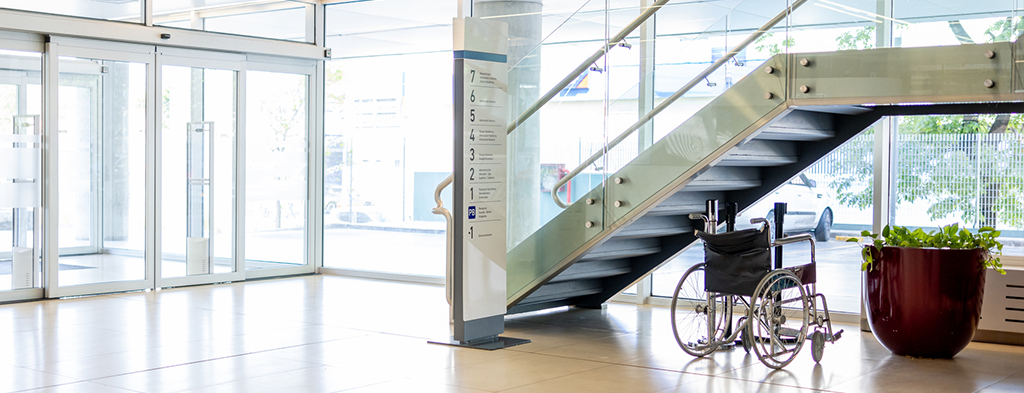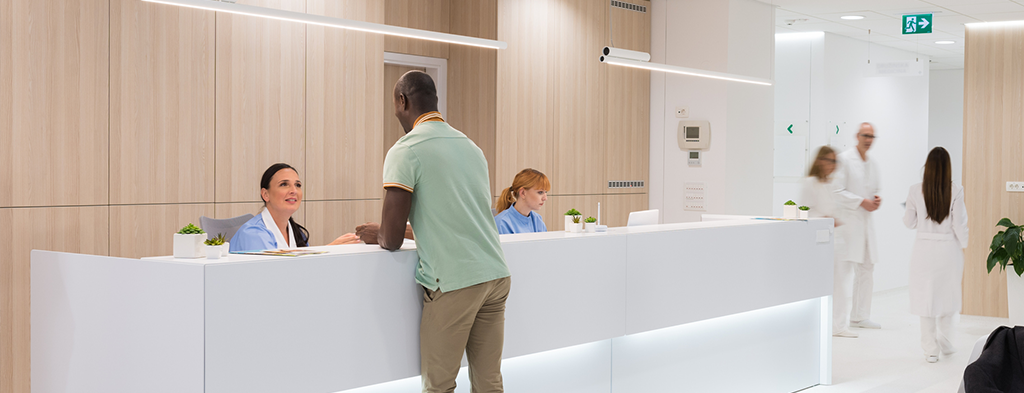Designing for accessibility goes beyond meeting legal requirements. It’s about treating every patient and visitor with dignity. In this blog, we explore how wayfinding, when centered on inclusion, can create a healthcare experience that is intuitive, equitable, and deeply human.
Dignity starts with the first step
For someone using a walker, experiencing cognitive decline, or navigating a system in a second language, every message, decision point, or interface carries weight. When these systems fall short, it’s not just a wayfinding issue, it’s a matter of dignity.
We’ve seen firsthand how thoughtful design can turn stress into confidence. And the difference often lies in how deeply inclusion is embedded, not just into touchpoints, but into strategy.
What does inclusion-centered design look like?
Designing for dignity means going beyond compliance:
- Visibility: Ensuring signs are legible, well-lit, and uncluttered.
- Language and literacy: Using plain language, visuals, and symbols that resonate across cultures.
- Sensory accessibility: Accounting for cognitive, auditory, and visual needs in environments and materials.
- Cultural representation: Incorporating inclusive imagery and symbolism across spaces.
It’s not an afterthought. It’s a value.
Too often, equitable design is added in reaction to complaints or accessibility audits. But when it’s integrated early, as a strategic driver, it shapes not just the space, but the experience.

The impact is profound
Inclusive wayfinding is more than a courtesy. It’s a statement of your values – made visible.
It reduces falls by guiding those with mobility challenges through safer, more accessible routes. It shortens visits by minimizing backtracking and confusion. It decreases missed or delayed appointments, helping patients arrive calm, on time, and ready for care.
But beyond the practical, it does something far more meaningful:
It affirms to every visitor, regardless of age, language, ability, background or other identify factor, that they are seen, welcomed, and supported.
When patients can navigate your space with ease, they feel a greater sense of autonomy and trust. When caregivers aren’t pulled away to give directions, they stay focused on what matters most – delivering care. And when your spaces reflect inclusive design, they tell a consistent, human-centered story about your brand.
These are not just operational wins. They’re emotional ones. Dignity isn’t just built in the exam room. It begins the moment someone goes on your website, makes an appointment, or arrives at your site.

Want to move beyond minimum standards? Let’s create wayfinding systems that reflect the dignity of everyone who walks through your doors. Contact Claar Ennis today at c.ennis@brandactive.com.



